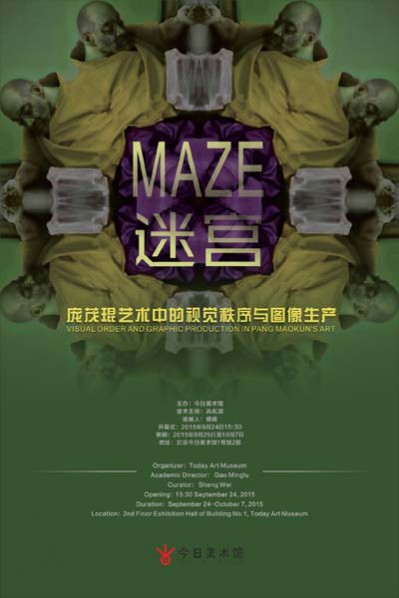
By Gao Minglu
Pang Maokun has a great interest in this mirror theory element within classical paintings, and this exhibition presents his explorations within this topic. Pang Maokun attempts to express a kind of paradoxical relationship in his painting, describing one looking at himself in the mirror while the one in the mirror gazes out at himself, or one looks at himself who is reflected in the eye of the one standing outside the mirror, and so on and so forth, potentially ad infinitum. As in the painting, "Las Meninas", where Velazquez brought the king and queen, who are standing outside the periphery of the painting, into the mirror reflection within the painting, Pang Maokun also tries to put figures and scenery outside the picture frame into his painting. In a sense, Pang Maokun's painting is also trying to develop his painting into a single "mirror" within a multitude mirrors, as did Velazquez.
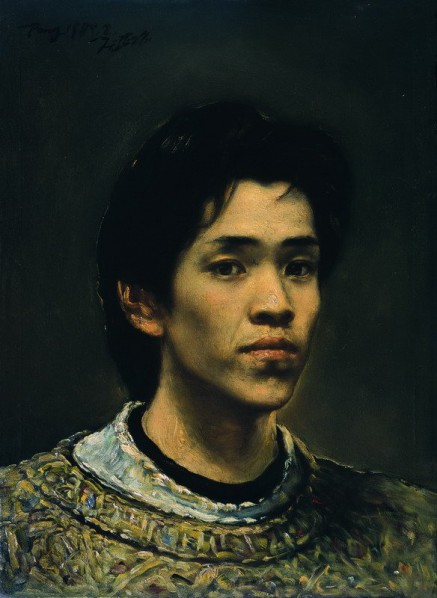
Pang Maokun, A Self Portrait, 1989; Oil on canvas, 57x41cm
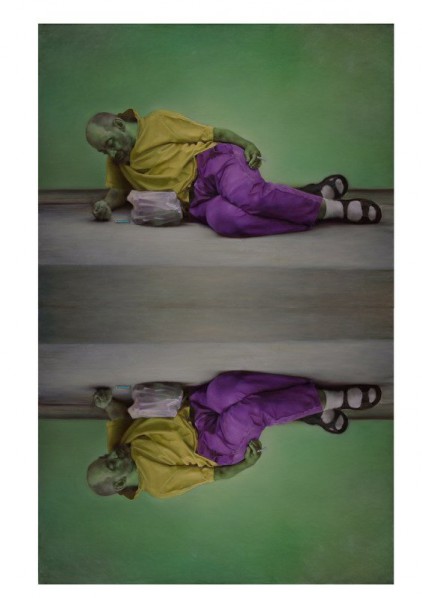
Pang Maokun, Narcissus, 2015; Oil on canvas, 320x200cm
Pang Maokun's latest works are trying to reproduce the complexity of how modern people observe the world, by incorporating the selfie, self-portraiture and symmetric self-portraiture to imply the many perspectives in “mirrored” viewing. In fact, simply stated, it's a question of how to deal with the relationship between the "simulation" and the "virtual". From a purely physical perspective, the mirror contains a simulacrum while the digital world is virtual; philosophically, western classical realism is more like simulacrum, while oriental traditional painting is more inclined to virtuality. So the greatest challenge of combining these two perspectives is actually the same as how one breaks the limitation of mirror image itself. Because western classical painting needs to imitate a self-contained space like a "box", but "virtuality" always requires the breaking of this "box" space. This breakthrough could be in how one imagines the space, but we still need to paint on the square frame and canvas. But this breaking probably occurs more in an imaginary virtual space, which is how the painting can be extended through the limited frame to outside of the "box." So only under this extending process, can painting reveal the complexity and paradox of the figure. So, I think in the world today, painting which is based on classical realist methodologies still would not return to the imitating pattern of the "box", but should achieve a more valuable "painting aesthetic". To some extent, this aesthetic relates to freedom. And it is not only about the freedom of the stroke, but also about the freedom of the entire painting's composition and perspective, and, disinhibiting the arrangement of the relationship among the figures inside the painting. In other words, the future meaning of realist painting is: "get out of the 'box'"—as "virtuality" and "painting aesthetic" combine.
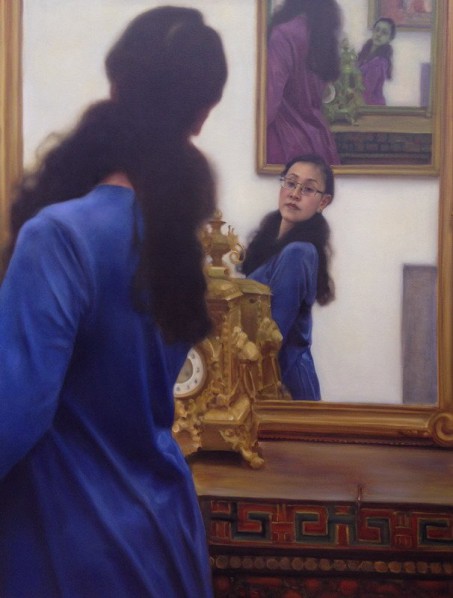
Pang Maokun, Flowers in the Mirror I, 2013; Oil on canvas, 160x120cm
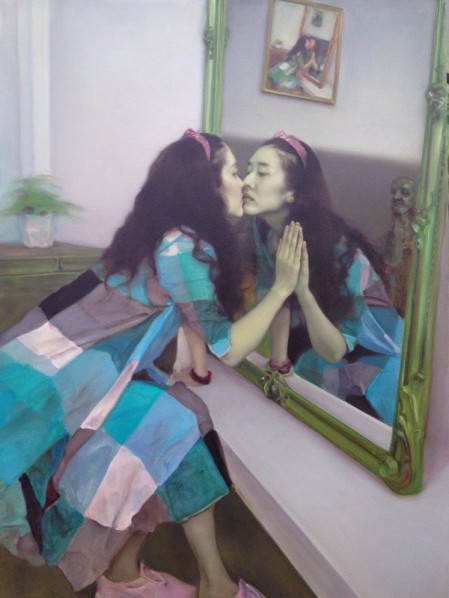
Pang Maokun, Flowers in the Mirror II, 2013; Oil on canvas, 160x120cm
About the exhibition
Curator: Sheng Wei
Opening time: 3:30pm, Sep. 24, 2015
Duration: 2015.09.24 -- 2015.10.07
Location: 2/F Exhibition Hall of Building 1,Today Art Museum
Courtesy of the artist and Today Art Museum, for further information please visit www.todayartmuseum.com.




























